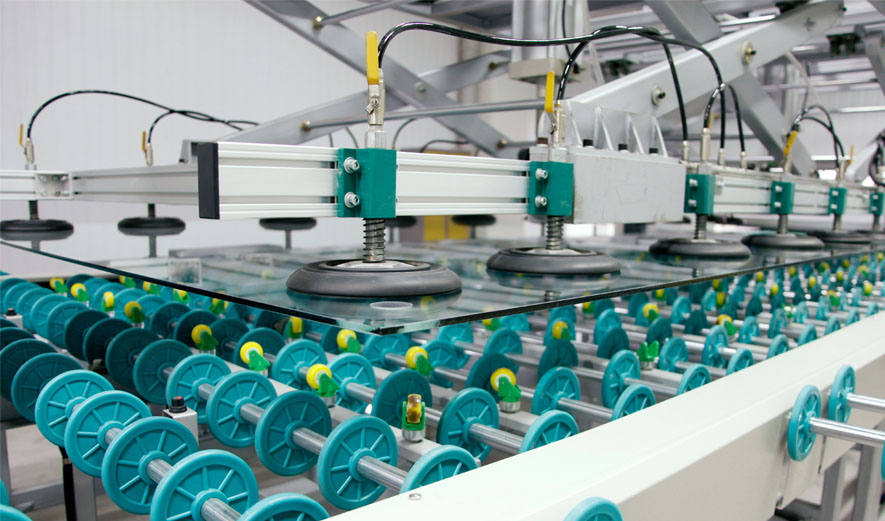Have you ever played Whac-A-Mole? The vintage arcade game’s play area (usually attached to a display board tracking your score) is a waist-high table with numerous holes. Randomly emerging from these cut-out craters are cartoonish moles made of plastic, which contestants are supposed to – you guessed it – whack with a soft mallet. Each time the player bonks a mole that pops up its head, sensors register points.
Writing about Whac-A-Mole is usually reserved for someone wanting to induce nostalgia for the theme parks of the 1980s, but in this case, the mechanical moles rearing their ugly heads is a good metaphor for an issue that has returned to challenge window and door manufacturers.
Yes, we are once again discussing the shortage of skilled labor.
Now that the supply chain issues of the last few years have settled, the lack of skilled workers has reemerged as a serious hindrance to the manufacturing industry in general and the fenestration sector in particular.
The good news and the bad news
The good news is that production automation – the most straightforward solution to a shortage of skilled labor – has become a much more widely accepted practice for window and door manufacturers than when this issue first came to prominence several years ago. After some initial skepticism – at least compared to other manufacturing sectors – the fenestration industry has mostly adopted some form of automation for its production processes. This has effectively led manufacturers to accomplish more with less – be it skilled staff, warehouse stock or other common causes of production overhead.
The bad news is that the shortage of skilled workers is worse than ever. In addition to dealing with the same reduced employee pool from which to draw – the repercussions of a generation taught to undervalue education in trades – manufacturers face two new major factors contributing to a scarcity of skills in the workforce: 1) As the years have gone by, even more Baby Boomers have retired from the workforce; and 2) The global pandemic caused many to reassess priorities and alter their career paths.
Can production automation handle the challenge of a further reduced workforce?
There’s no point in beating around the bush. Spending money on signing bonuses, bigger factory break rooms and free snacks isn’t going to attract a workforce that no longer exists.
Once again, the answer is increased automation. Where manufacturers in the past might have considered the aspects of their operations that could be easily automated, and then proceeded to find the software to accommodate this; manufacturers now must consider a bigger transformation through further automation.
While industry trepidation surrounding automation has certainly decreased, the word “transformation” is going to stir a reaction in any business owner, let alone a manufacturer overseeing complex and complicated operations. Not helping matters is how automation is often presented as a way of “letting go.”
That type of language suggests less control over the production process, when the opposite is true.
How automation mitigates a lack of skilled workers


What production automation does is streamline operations and reduce the need (and the errors associated with) manual, human labor. From the initial design phase through to the final production stage, automation tools ensure a smooth and efficient journey – all, with yes, minimal human intervention, but also greater control for production managers.
For instance, Soft Tech’s Automation Module enables manufacturers to configure their CNC, milling and saw machines without the need for manual programming. It uses 3D design data from Soft Tech’s Design & Estimation Software and transfers it to the machinery, without the need for a middleman. The Manufacturing Software is so easy to use that – instead of placing unanswered help wanted ads on job-posting websites – manufacturers can assign workers without years of education and experience to operate the machinery.
More benefits to automation
An automated process also contributes to increased precision, consistency and quality control. Even labor with the highest skills will make errors from time to time. An automated process eliminates bad measurements, wasted materials and inconsistent results.
It also translates to a faster time-to-market for new products. Through window and door modelling software, new measurements and data are easily inputted and designed, then sent straight to the machinery. This further assures that whatever customers have been quoted and promised is produced and delivered, exactly as specified.
The same also applies to customized products. While automation may conjure images of one-size-fits-all processes, modern automation tools allow window and door manufacturers to accommodate almost any customization request, from unique design specifications to individualized features.
Soft Tech’s Automation Module
At a time when skilled labor shortages threaten the growth and profitability of window and door manufacturers, the competitive advantage provided by automation is enormous. What sets Soft Tech’s Automation Module apart from others is that it’s exclusively built for the fenestration industry.
To bring things back to the metaphor at the beginning, using Soft Tech’s automation solution doesn’t just provide you with a bigger mallet to hit the moles when they pop up; it doesn’t just slow down the moles either. It transforms the game entirely so that you’re leaving the theme park with a prize while competitors are still playing in the kiddie arcade.
To learn more about how Soft Tech’s Automation Module can help you battle a lack of skilled labor and meet the specific needs of your window and door manufacturing business, reach out today for a free demonstration.
